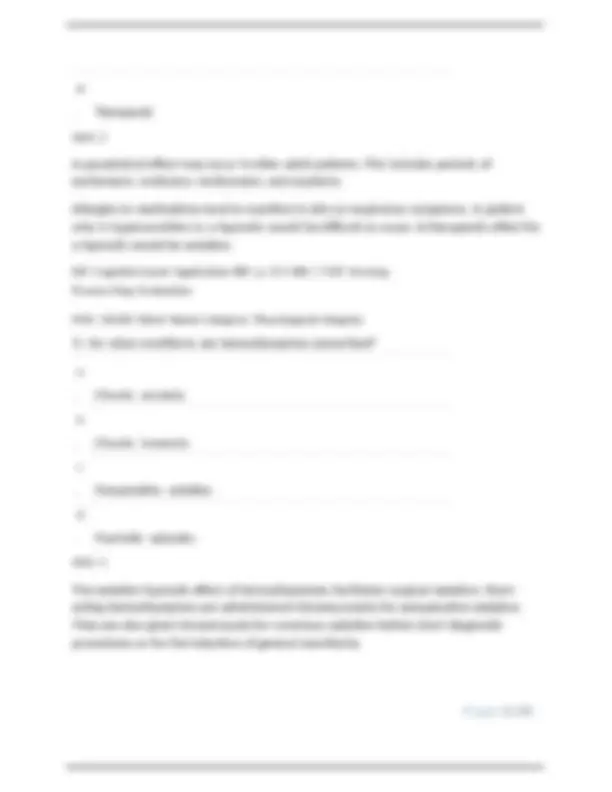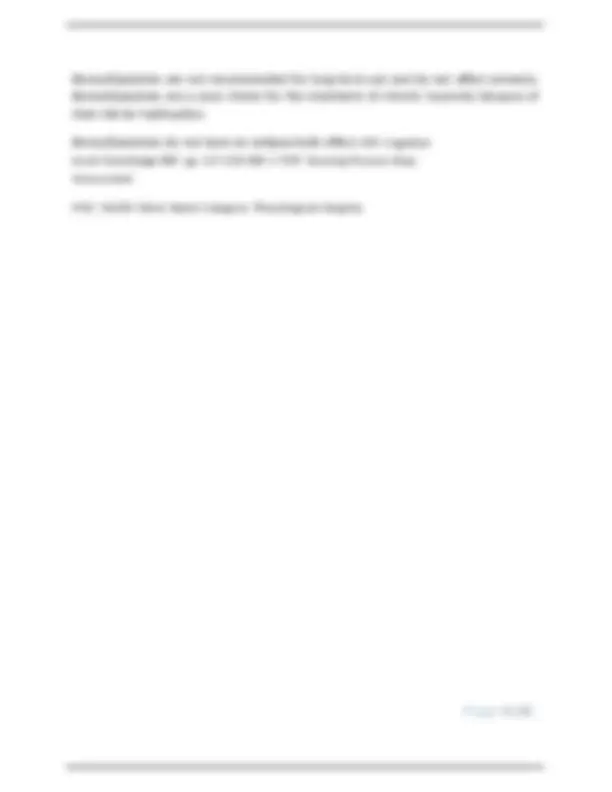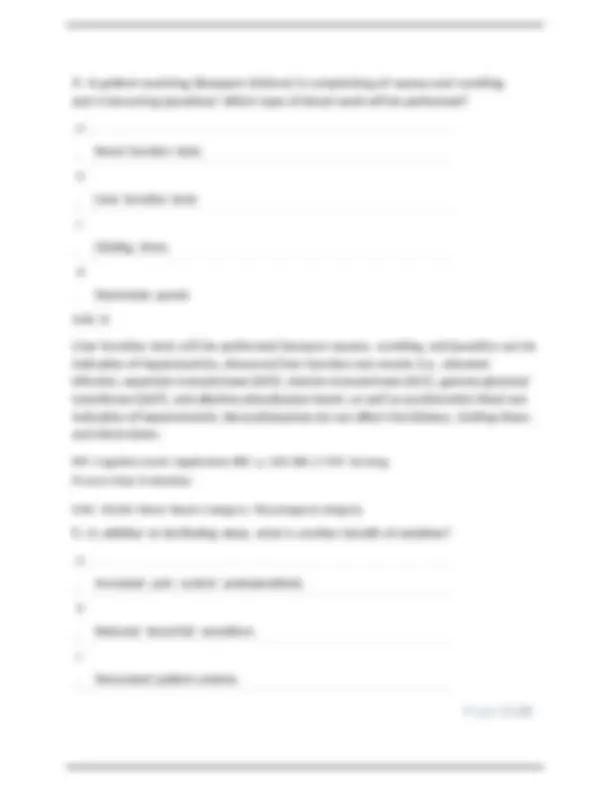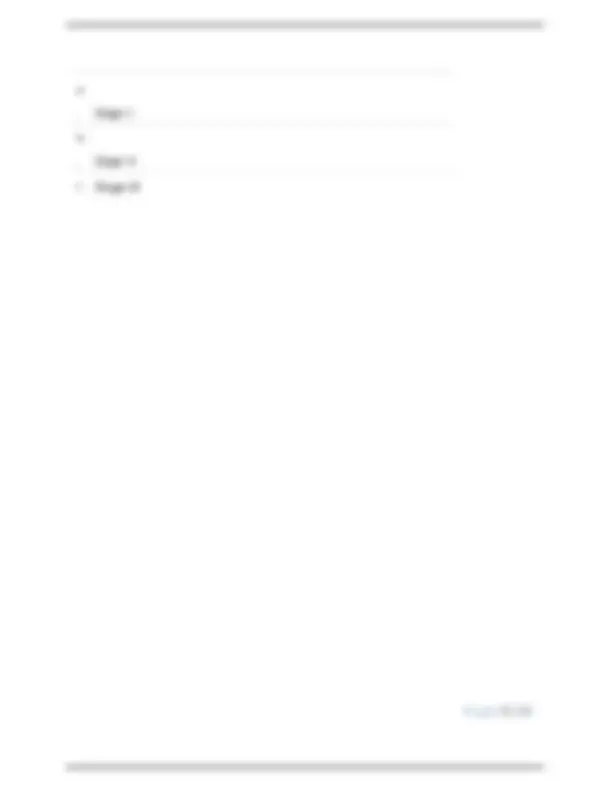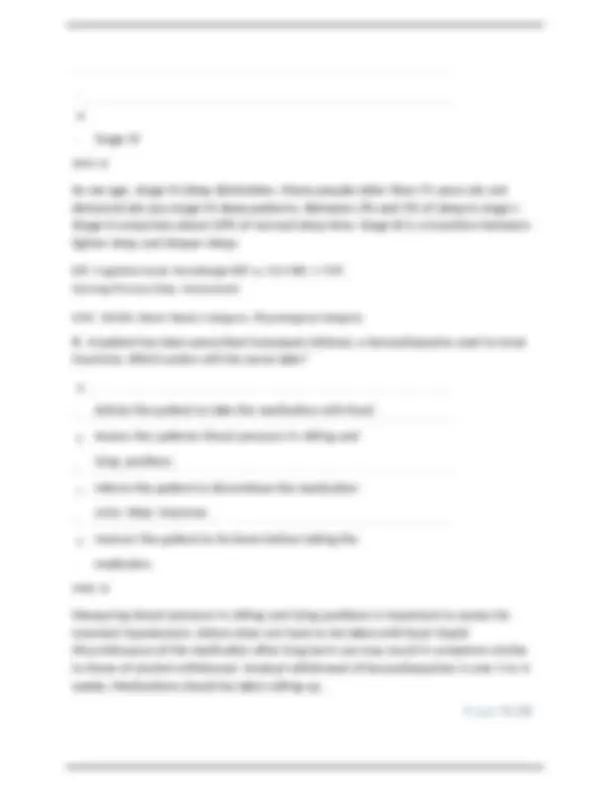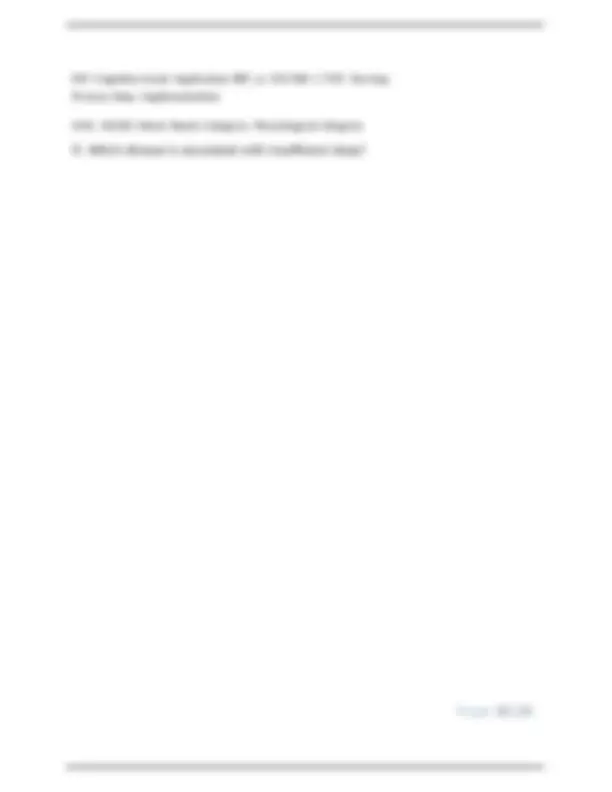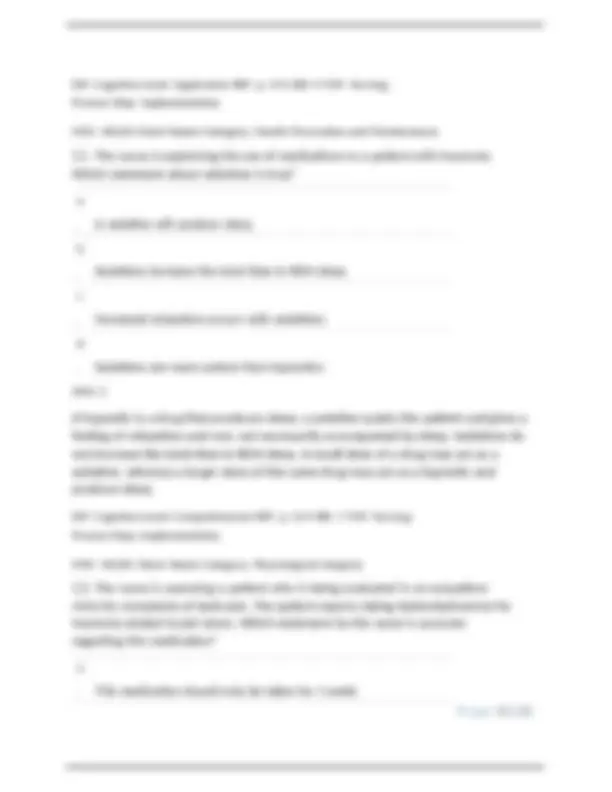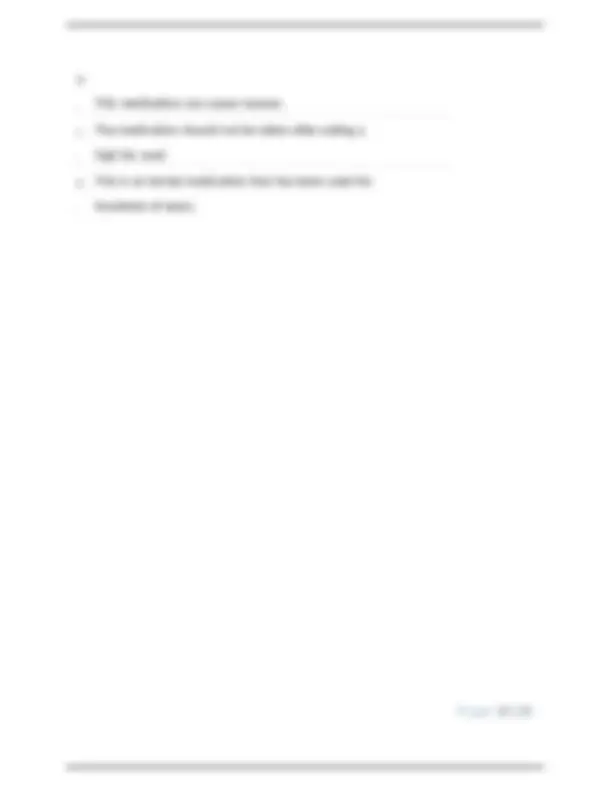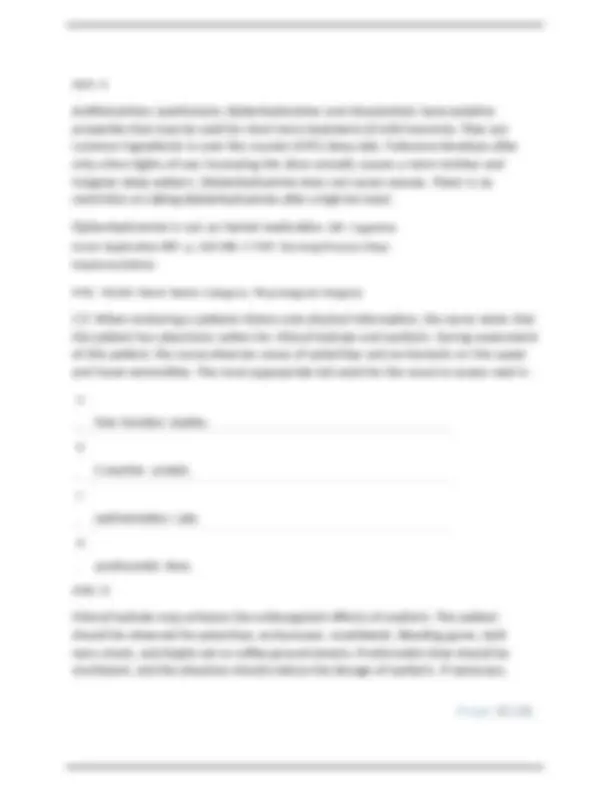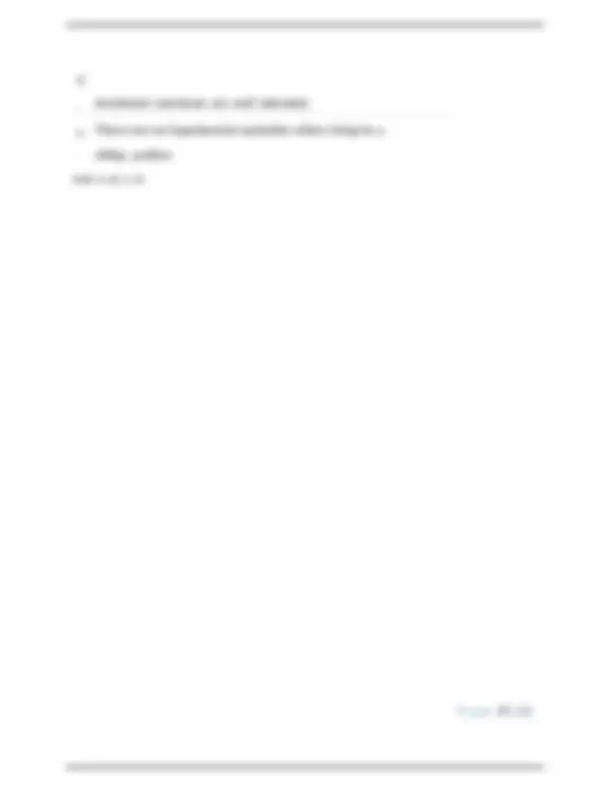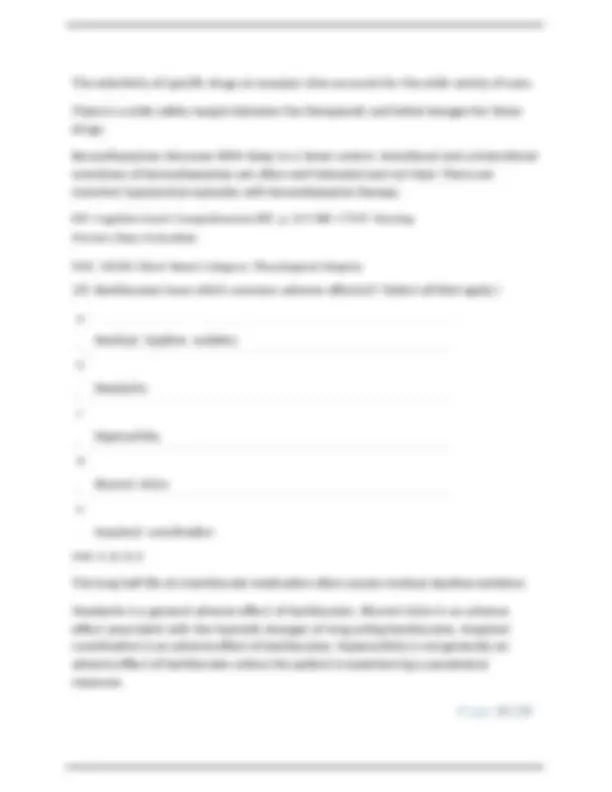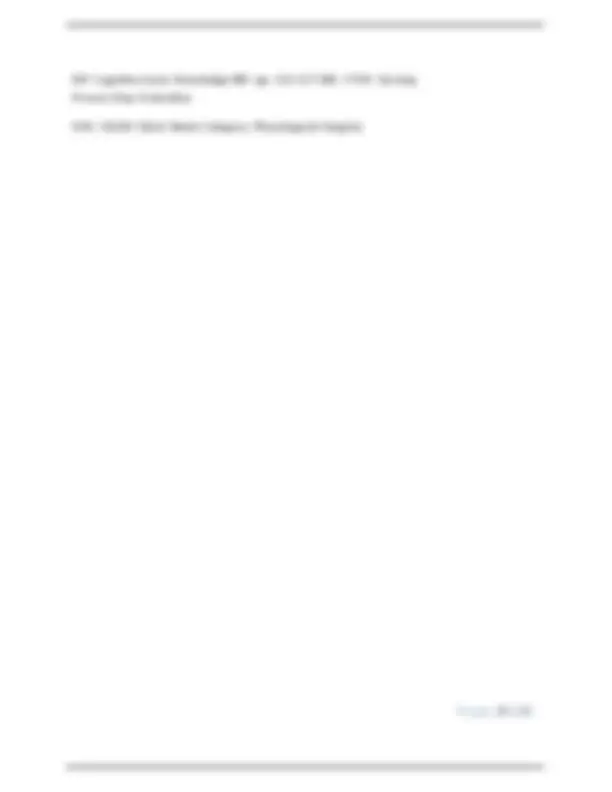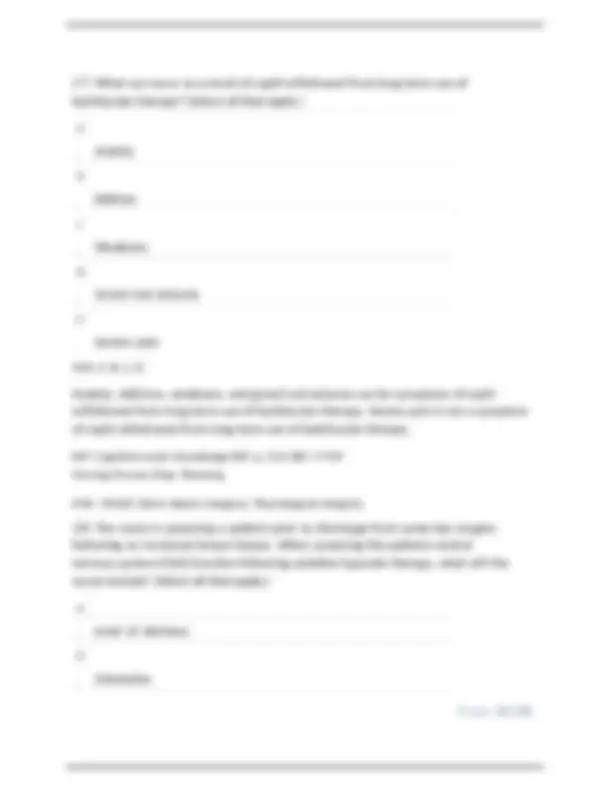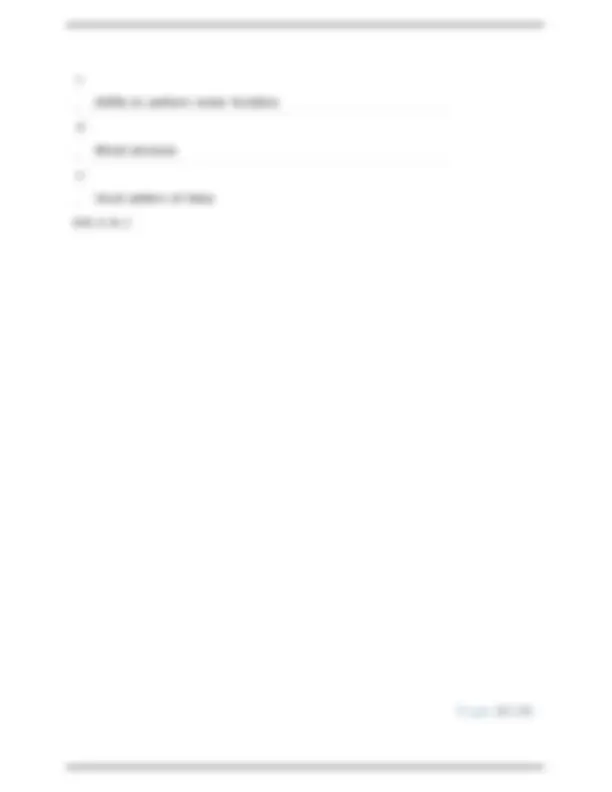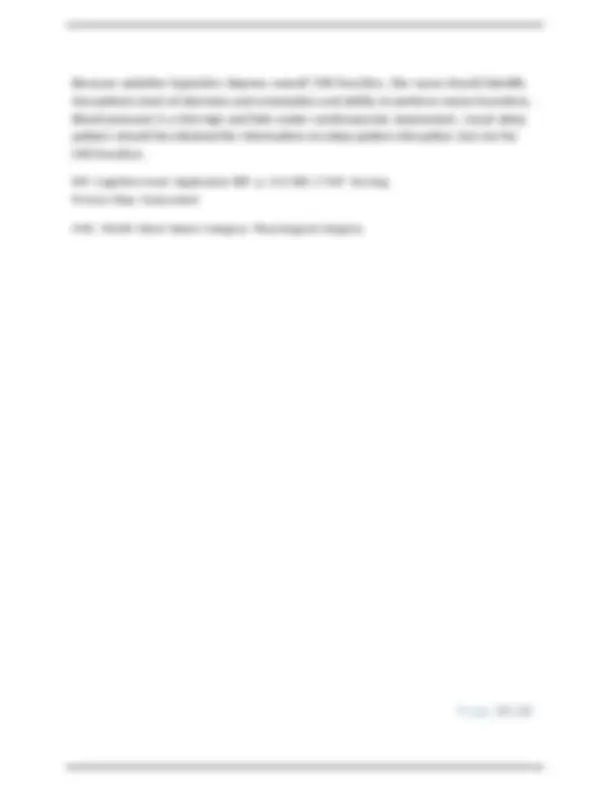Download Drugs Used for Sleep My Nursing Test Banks Chapter 14 and more Exams Nursing in PDF only on Docsity!
Drugs Used for Sleep My Nursing Test Banks Chapter 14
Chapter 14: Drugs Used for Sleep Test Bank MULTIPLE CHOICE
- The nurse finds that a patient is extremely agitated, yells frequently, and is attempting to get out of bed without assistance. What is the nurses initial action? a Administer^ zolpidem after^ taking^ the^ patients^ vital . signs. b Close the patients^ door^ for^ privacy^ after . administering Tylenol. c Administer^ benzodiazepine^ before^ calling^ the^ health . care^ provider. d . Spend uninterrupted time listening to the patient. ANS: D Assessing the patients level of anxiety is important. The patient may only need someone to listen to what stressors he or she is facing. The nurse must assess the patient before medication can be administered. DIF: Cognitive Level: Analysis REF: p. 214 OBJ: 3 TOP: Nursing Process Step: Assessment MSC: NCLEX Client Needs Category: Physiological Integrity
- An older adult patient received a hypnotic agent at 9:00 PM. At 2:00 AM, the nurse discovers that the patient has removed her gown and is attempting to get out of bed without assistance. What type of medication effect is the patient exhibiting? a . Allergic b . Hypersensitivity
c
. Paradoxical
Benzodiazepines are not recommended for long term use and do not affect amnesia. Benzodiazepines are a poor choice for the treatment of chronic insomnia because of their risk for habituation. Benzodiazepines do not have an antipsychotic effect. DIF: Cognitive Level: Knowledge REF: pp. 217-218 OBJ: 4 TOP: Nursing Process Step: Assessment MSC: NCLEX Client Needs Category: Physiological Integrity
- A patient receiving diazepam (Valium) is complaining of nausea and vomiting and is becoming jaundiced. Which type of blood work will be performed? a . Renal^ function^ tests b . Liver function tests c . Clotting times d . Electrolyte^ panels ANS: B Liver function tests will be performed because nausea, vomiting, and jaundice can be indicative of hepatotoxicity. Abnormal liver function test results (i.e., elevated bilirubin, aspartate transaminase [AST], alanine transaminase [ALT], gamma glutamyl transferase [GGT], and alkaline phosphatase levels, as well as prothrombin time) are indicative of hepatotoxicity. Benzodiazepines do not affect the kidneys, clotting times, and electrolytes. DIF: Cognitive Level: Application REF: p. 220 OBJ: 6 TOP: Nursing Process Step: Evaluation MSC: NCLEX Client Needs Category: Physiological Integrity
- In addition to facilitating sleep, what is another benefit of sedatives? a . Increased^ pain^ control^ postoperatively b . Reduced bronchial secretions c . Decreased patient anxiety
postoperative pain control. Sedatives do not affect bronchial secretions. Sedatives diminish patient alertness. DIF: Cognitive Level: Knowledge REF: pp. 213-214 OBJ: 1 TOP: Nursing Process Step: Planning MSC: NCLEX Client Needs Category: Physiological Integrity
- Which two phases make up normal sleep? a . Hypnagogic and hypnopompic b . Rapid^ eye^ movement^ (REM)^ and^ non^ REM c . Alpha^ and^ beta d . Delta^ and^ theta ANS: B Normal sleep can be divided into two phases, REM and non REM. Hypnagogic is the state between waking and sleeping; hypnopompic is the transition between sleeping and waking states. Beta waves are those associated with day to day wakefulness. During periods of relaxation while still awake, our brain waves become slower, increase in amplitude, and become more synchronous. These types of waves are called alpha waves. The first stage of sleep is characterized by theta waves. During a normal nights sleep, a sleeper passes from the theta waves of stages 1 and 2 to the delta waves of stages 3 and 4. Delta waves are the slowest and highest amplitude brain waves. DIF: Cognitive Level: Knowledge REF: p. 212 OBJ: 1 TOP: Nursing Process Step: Assessment MSC: NCLEX Client Needs Category: Physiological Integrity
- Which sleep pattern stage diminishes as an effect of aging?
a
. Stage^ I b . Stage^ II c (^) Stage III
DIF: Cognitive Level: Application REF: p. 218 OBJ: 1 TOP: Nursing Process Step: Implementation MSC: NCLEX Client Needs Category: Physiological Integrity
- Which disease is associated with insufficient sleep?
a
. Cancer b . Glaucoma c . Myocardial^ infarction d . Renal failure ANS: C Individuals who sleep less than 5 hours a night have a threefold increased risk of heart attacks. Cancer, glaucoma, and renal failure are not associated with lack of sleep. DIF: Cognitive Level: Knowledge REF: p. 212 OBJ: 1 TOP: Nursing Process Step: Implementation MSC: NCLEX Client Needs Category: Health Promotion and Maintenance
- The nurse is caring for an older patient recently admitted to an assisted living center who is experiencing insomnia associated with the recent relocation. At bedtime, which nursing action will assist the patient to sleep? a . Offering^ the^ patient^ hot^ tea b . Encouraging the patient to ambulate in the hallway c . Performing back massage d . Administering^ an^ analgesic ANS: C
DIF: Cognitive Level: Application REF: p. 214 OBJ: 3 TOP: Nursing Process Step: Implementation MSC: NCLEX Client Needs Category: Health Promotion and Maintenance
- The nurse is explaining the use of medications to a patient with insomnia. Which statement about sedatives is true? a . A sedative will produce sleep. b . Sedatives^ increase^ the^ total^ time^ in^ REM^ sleep. c . Increased^ relaxation^ occurs^ with^ sedatives. d . Sedatives^ are^ more^ potent^ than^ hypnotics. ANS: C A hypnotic is a drug that produces sleep; a sedative quiets the patient and gives a feeling of relaxation and rest, not necessarily accompanied by sleep. Sedatives do not increase the total time in REM sleep. A small dose of a drug may act as a sedative, whereas a larger dose of the same drug may act as a hypnotic and produce sleep. DIF: Cognitive Level: Comprehension REF: p. 214 OBJ: 1 TOP: Nursing Process Step: Implementation MSC: NCLEX Client Needs Category: Physiological Integrity
- The nurse is assessing a patient who is being evaluated in an outpatient clinic for complaints of back pain. The patient reports taking diphenhydramine for insomnia related to job stress. Which statement by the nurse is accurate regarding this medication? a . This^ medication^ should^ only^ be^ taken^ for^1 week.
b
. This^ medication^ can^ cause^ nausea. c The^ medication^ should^ not^ be^ taken^ after^ eating^ a . high fat meal. d This^ is^ an^ herbal^ medication^ that^ has^ been^ used^ for . hundreds of years.
DIF: Cognitive Level: Application REF: p. 222 OBJ: 6 TOP: Nursing Process Step: Implementation
MSC: NCLEX Client Needs Category: Physiological Integrity
- The nurse is administering Somnote to a patient. When providing medication education to the patient, the nurse will include that Somnote should be: a . thoroughly chewed. b . taken with a full glass of water. c . taken^ on^ an^ empty^ stomach. d . taken^ only^ before^ bedtime. ANS: B Somnote is available in capsule form and should not be chewed, should be taken with a full glass of water, should be taken after meals, and is usually ordered to be taken three times a day after meals. DIF: Cognitive Level: Application REF: p. 221 OBJ: 4 TOP: Nursing Process Step: Implementation MSC: NCLEX Client Needs Category: Physiological Integrity MULTIPLE RESPONSE 15. Why are benzodiazepines often preferred over barbiturates? (Select all that apply.) a They^ have^ selective^ action^ at^ specific^ receptor . sites. b There^ is^ a^ wide^ range^ of^ safety^ between . therapeutic and lethal levels. c . REM^ sleep^ is^ decreased^ to^ a^ lesser^ extent.
The selectivity of specific drugs at receptor sites accounts for the wide variety of uses. There is a wide safety margin between the therapeutic and lethal dosages for these drugs. Benzodiazepines decrease REM sleep to a lesser extent. Intentional and unintentional overdoses of benzodiazepines are often well tolerated and not fatal. There are transient hypotensive episodes with benzodiazepine therapy. DIF: Cognitive Level: Comprehension REF: p. 217 OBJ: 4 TOP: Nursing Process Step: Evaluation MSC: NCLEX Client Needs Category: Physiological Integrity
16. Barbiturates have which common adverse effect(s)? (Select all that apply.) a . Residual^ daytime^ sedation b . Headache c . Hyperactivity d . Blurred vision e . Impaired coordination ANS: A, B, D, E The long half life of a barbiturate medication often causes residual daytime sedation. Headache is a general adverse effect of barbiturates. Blurred vision is an adverse effect associated with the hypnotic dosages of long acting barbiturates. Impaired coordination is an adverse effect of barbiturates. Hyperactivity is not generally an adverse effect of barbiturates unless the patient is experiencing a paradoxical response.
DIF: Cognitive Level: Knowledge REF: pp. 215-217 OBJ: 4 TOP: Nursing Process Step: Evaluation MSC: NCLEX Client Needs Category: Physiological Integrity

